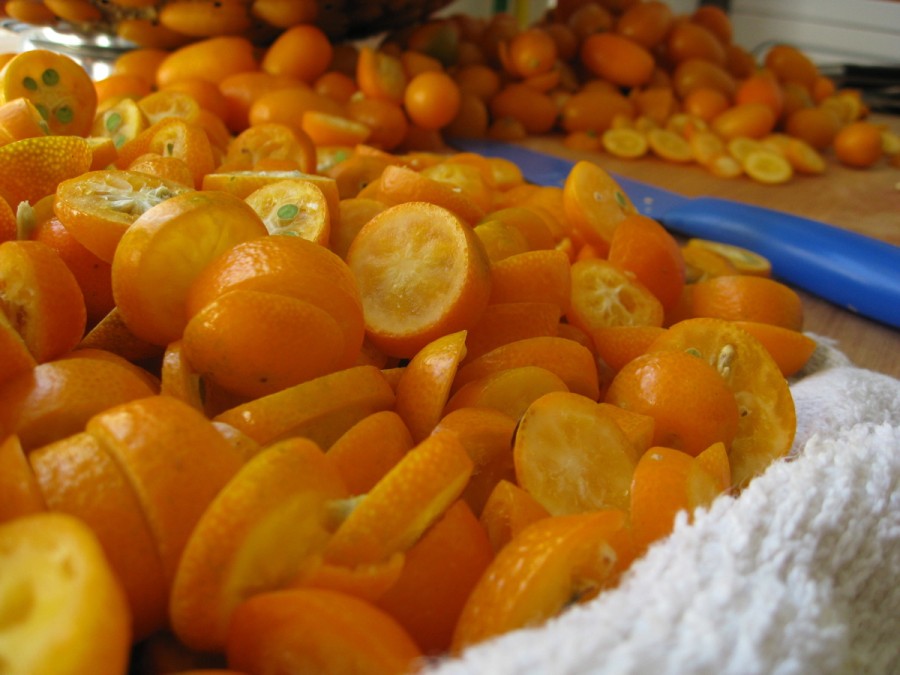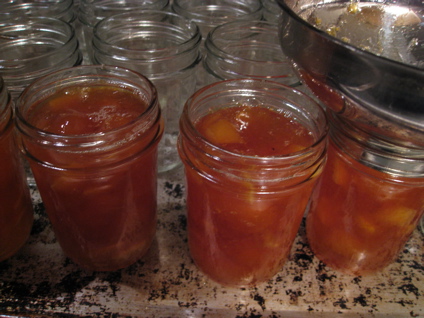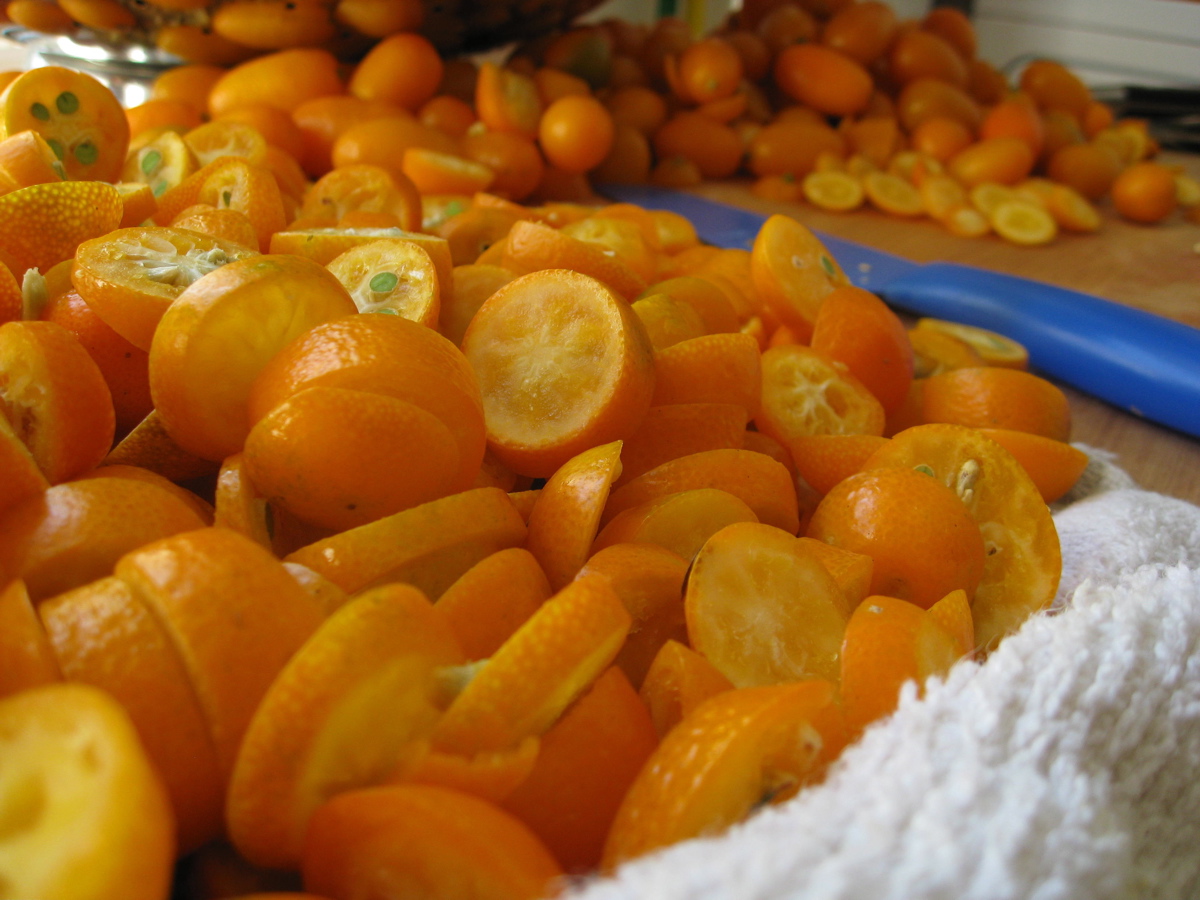 Jewels of winter: Kumquats from L’Hoste Organic Citrus Farm in Plaquemines Parish, Louisiana. Photo: April McGreger
Jewels of winter: Kumquats from L’Hoste Organic Citrus Farm in Plaquemines Parish, Louisiana. Photo: April McGreger
For a long time, I never really saw citrus fruits. Lemon, limes, oranges, and even grapefruits were just fruits I often had in my fridge–nice, but unremarkable.
All of that changed in 2005. That’s when I realized that, like so much else, the citrus varieties we have available to us are the dull tip of a spectacular iceberg of biodiversity and deliciousness. Like the red delicious apple, I learned, most supermarket citrus, both conventional and organic, offers but a shadow of the fruit’s true glory.
That fall, I was given the chance to offer communal support–something so elemental, yet, sadly so rare in these days of frenetic consumption. In the weeks following the devastation of Hurricane Katrina, New Orleans native Poppy Tooker, champion of the self-styled “Eat-it-to-Save-it” Movement, found out that the L’Hoste Organic Citrus Farm in Plaquemines Parish, Louisiana, had escaped Katrina with only minor damage. But the infrastructure and outlets for selling the farm’s produce had been devastated. Through her contacts with Slow Food USA, Tooker got the word out and took orders for the L’Hoste’s prized citrus. I signed on to receive my first 5 boxes.
When my Satsumas arrived, their skin was tinged with green, but what lay beneath it was the sweetest, juiciest, most ethereal oranges I had ever eaten. The following year when I contacted the L’Hostes to order more, it was Lester L’Hoste himself who answered the phone while manning his booth at the Crescent City Farmers Market. I found that they were also the growers of Meyer lemons, both sweet and sour kumquats, two varieties of grapefruit, and more. I ordered some of all of them, and have come to anticipate the first Satsumas and Meyer lemons of late fall just like I do the first sun-ripened tomato of summer.
My citrus epiphany led quite naturally to a marmalade conversion. Turns out you don’t have to be British to be endlessly enchanted by the stuff! I’m inclined to believe there is no better defense against the winter doldrums than marmalade, toast, and tea. The concentrated burst of sweet, bitter, and tart feels like warm sunshine on my face and sand between my toes.
And now, here I am in the middle of winter with snow on the ground. Just as I am beginning to believe the preserving season is over, I find myself with my most challenging and rewarding subject yet. Yes, marmalade has a reputation for being fussy. From my experience, however, most of the difficulty of making marmalade can be remedied with a very sharp knife for slicing through the fruit. Other helpful tips include, using a candy thermometer for a more reliable set, and using citrus in its prime. Overripe citrus or citrus that has been sitting around in your refrigerator for weeks will be lower in pectin, therefore, will not set properly.
Marmalade that has a somewhat softer set is still delicious so don’t be deterred. It makes a wonderful glaze for fish, chicken, or pork, as well as a topping for yogurt, pound cake, oatmeal or pudding. I even love it stirred into mashed sweet potatoes and use it as a flavor booster in sweet potato and pumpkin pie filling.
Still too timid to attempt marmalade on your own? The best way to get your feet wet is to take a class or observe a pro. Luckily, you don’t have to go to cross the Atlantic to find skilled marmalade makers. On the west coast, check out classes offered by Brit expat June Taylor of June Taylor Jams or Rachel Saunders of Blue Chair Fruit Company. Easterners, check out Marisa McClellan’s, of foodinjars.com, class in Philadelphia next week.
Know of any other classes offered by skilled marmaladers? How about direct sale, minor purveyors of delicious, organic citrus? Please share this information with the rest of us in comments below! If you aren’t ready to make your own marmalade but you still want to know what all the fuss is about, you can support gifted artisans like June Taylor, Casey Havre of Lou Lou’s Garden, and Rachel Saunders through their online stores. I’d rather receive a jar of their marmalades than a box of truffles on Valentine’s Day. Honey, are you reading this?
 Your marmalade epiphany awaits you. Photo: April McGregerThree-Citrus Marmalade
Your marmalade epiphany awaits you. Photo: April McGregerThree-Citrus Marmalade
So far this year I’ve made three-citrus marmalade — a mix of Meyer lemons, Ruby Red grapefruit, and kumquats; a Satsuma-rosemary marmalade; and sour kumquat marmalade. A quick search on the internet will yield all sorts of other esoteric combinations, such as Rangpur lime & ginger; Lemon & Cara Cara orange; or even Bergamot. Start with the best citrus you have access to. I find that you can use sweet oranges in marmalade but it is helps to balance that flavor with a supporting role of a bitter or tart variety.
Ingredients
1 ½ pounds organic citrus — I used grapefruit, sour kumquats, and Meyer lemons, but oranges, limes, and other citrus would also work
3 1/2 cups water
1/4 cup lemon juice
4 cups sugar
Canning equipment: three pint-sized or six 8-ounce or canning jars with rings and lids, a funnel, tongs, a ladle, a wide 12-quart pot, a candy or deep fry thermometer, a sheet pan, and a small 3 to 4 quart pot.
Instructions
Scrub your citrus. For oranges, grapefruit, lemons, or limes, slice off the top and the bottom of the fruit, deep enough so you can see the flesh. Half the fruit, squeeze out the excess juice and reserve. Slice each half into halves or thirds, or even quarters, depending on the size of the fruit, then slice thinly, peel, pith, and all. Discard the seeds as you go. For kumquats, slice the fruit thinly, and discard the seeds.
Place the sliced citrus in a wide preserving pan. Add the reserved juice and the water. Set aside for 4 hours.
After 4 hours, bring the fruit mixture to a boil, turned down to a simmer, and cook uncovered until the fruit is tender, about 40 to 45 minutes.
While the marmalade is cooking, preheat your oven to 250 degrees F. Place your washed jars on a sheet pan and place in the oven. Bring a 3 to 4 quart pot of water to a boil and boil your lids, as well as your tongs, ladle, and funnel for 10 minutes to sterilize before canning the marmalade.
When the fruit is tender, stir in the sugar and lemon juice and bring back to boil. Attach a candy or deep fry thermometer to the side of your pot. Boil rapidly, stirring occasionally until the thermometer registers between 222 and 225 degrees F.
Test the set of the marmalade with the plate test. Drop a teaspoon of marmalade on a plate and place in the freezer for 1 minute. If it thickens up on the plate, it is done.
Remove the jars from the oven. Pour the marmalade into the sterilized jars, leaving a 1/4-inch of headspace, and top with sterilized lids. Do not disturb for 24 hours so that a proper set can be achieved. After 24 hours, check to see that the jars have sealed. Refrigerate any unsealed marmalades and use immediately. The sealed jars can be stored in a cool, dark place for up to one year.


